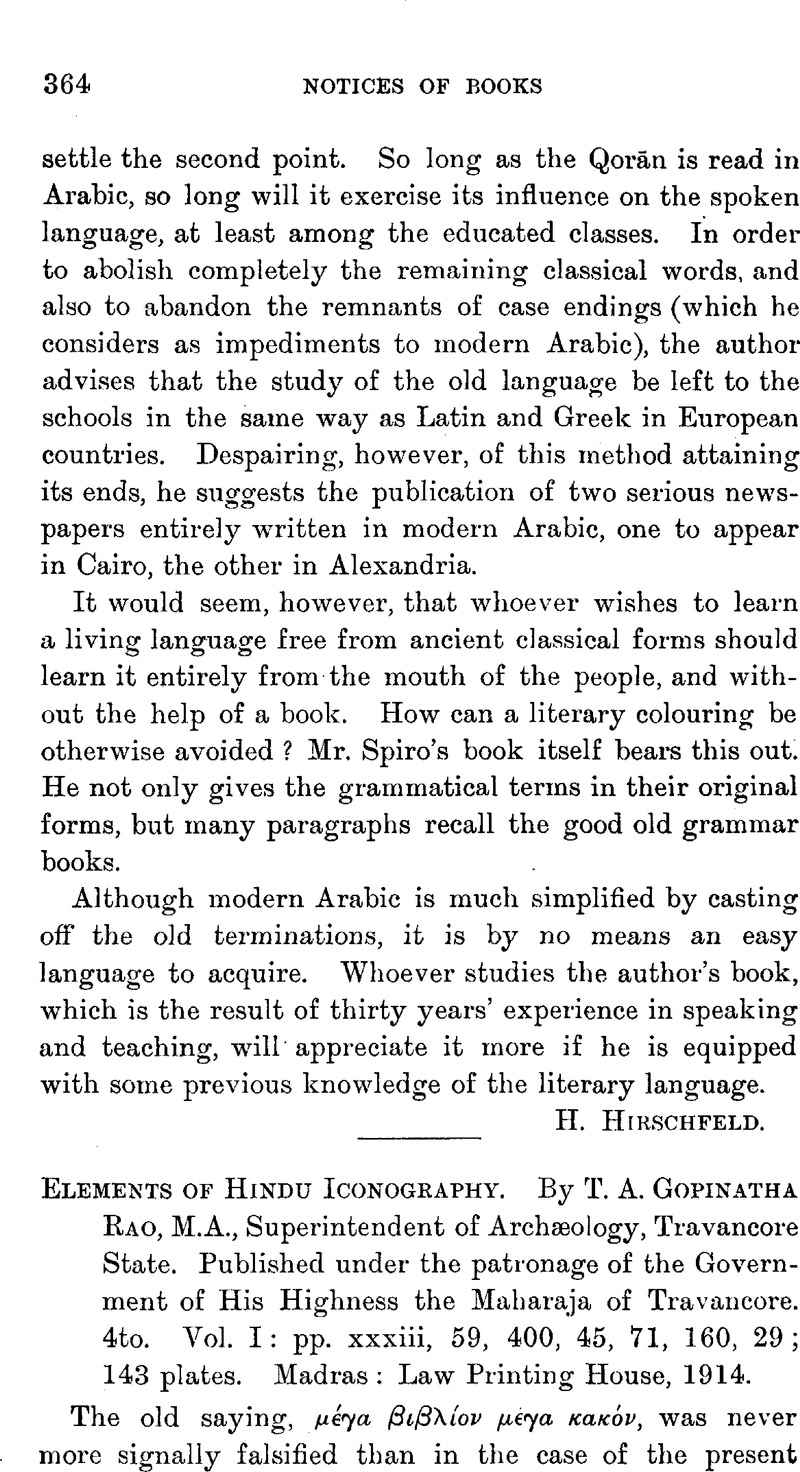No CrossRef data available.
Article contents
Elements of Hindu Iconography. By T. A. Gopinatha Rao, M.A., Superintendent of Archæology, Travancore State. Published under the patronage of the Government of His Highness the Maharaja of Travaucore. 4to. Vol. I: pp. xxxiii, 59, 400, 45, 71, 160, 29; 143 plates. Madras: Law Printing House, 1914.
Published online by Cambridge University Press: 15 March 2011
Abstract

- Type
- Notices of Books
- Information
- Copyright
- Copyright © The Royal Asiatic Society 1915
References
1 The Bṛihat-s°, lviii, 15, states that “the face together with the pile of hair is said by Nagnajit to be 16 aṅgulas in length”; this agrees with Chitra-l°, p. 152, which gives the length of the face as 12 aṅgulas and that of the ushṇīsha as 4 aṅgulas. The Bṛihat-s° (ibid.) gives the width of the neck as 10 aṅgulas; Chitra-l°, p. 156, states that the neck of figures flying towards heaven is 10 aṅgulas long and 10 aṅgulas thick. The statement of Bṛihat-s°, lviii, 4, that the Dravidian type according to Nagnajit has a face 14 aṅgulas long, I cannot find in the Chitra-l°; but it may have been in the original source of the latter compilation. I may add that I cannot understand the reasons that have led Dr. Laufer to assign a Jain origin to the Chitra-l°.




